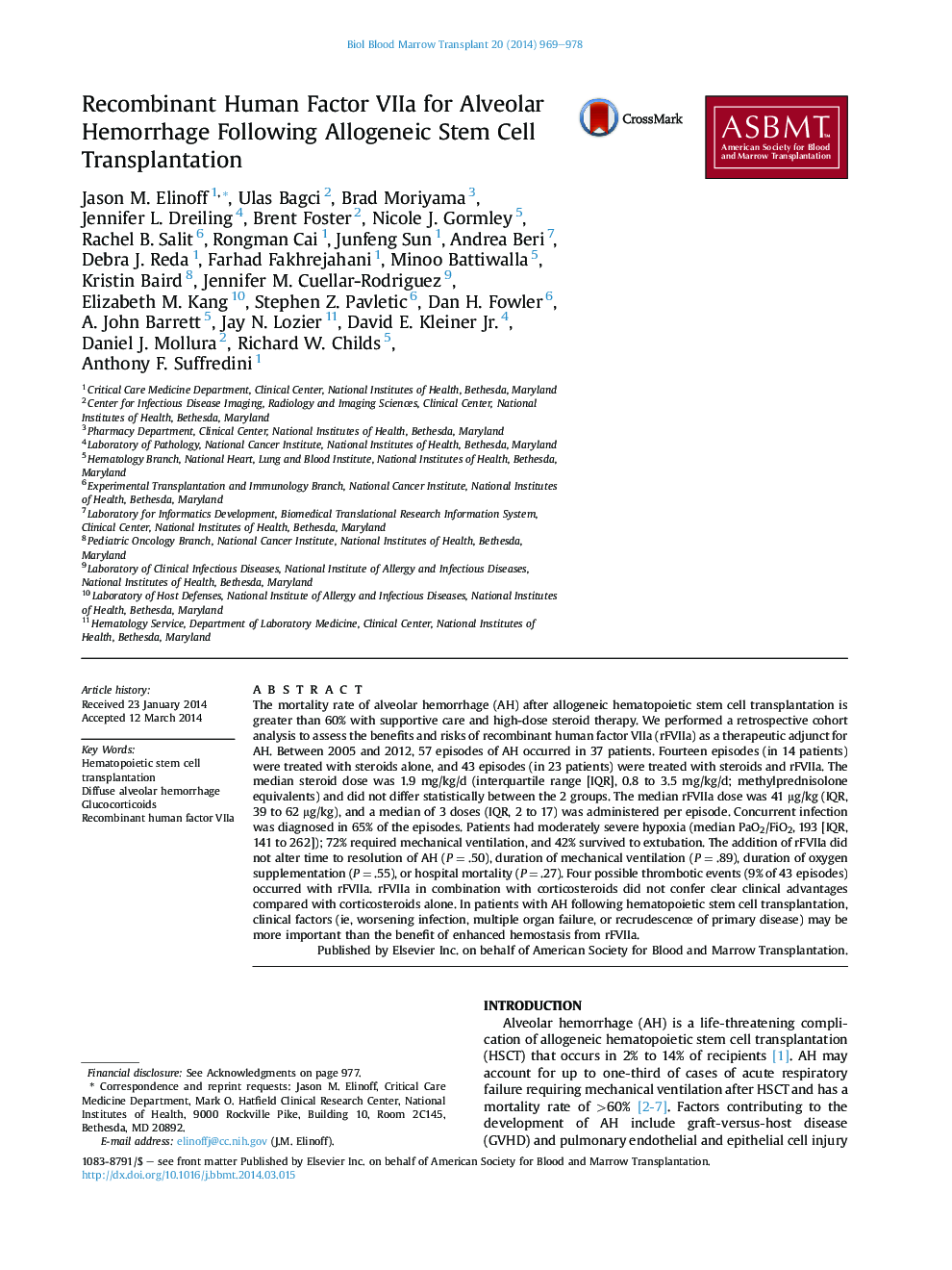| Article ID | Journal | Published Year | Pages | File Type |
|---|---|---|---|---|
| 2102310 | Biology of Blood and Marrow Transplantation | 2014 | 10 Pages |
The mortality rate of alveolar hemorrhage (AH) after allogeneic hematopoietic stem cell transplantation is greater than 60% with supportive care and high-dose steroid therapy. We performed a retrospective cohort analysis to assess the benefits and risks of recombinant human factor VIIa (rFVIIa) as a therapeutic adjunct for AH. Between 2005 and 2012, 57 episodes of AH occurred in 37 patients. Fourteen episodes (in 14 patients) were treated with steroids alone, and 43 episodes (in 23 patients) were treated with steroids and rFVIIa. The median steroid dose was 1.9 mg/kg/d (interquartile range [IQR], 0.8 to 3.5 mg/kg/d; methylprednisolone equivalents) and did not differ statistically between the 2 groups. The median rFVIIa dose was 41 μg/kg (IQR, 39 to 62 μg/kg), and a median of 3 doses (IQR, 2 to 17) was administered per episode. Concurrent infection was diagnosed in 65% of the episodes. Patients had moderately severe hypoxia (median PaO2/FiO2, 193 [IQR, 141 to 262]); 72% required mechanical ventilation, and 42% survived to extubation. The addition of rFVIIa did not alter time to resolution of AH (P = .50), duration of mechanical ventilation (P = .89), duration of oxygen supplementation (P = .55), or hospital mortality (P = .27). Four possible thrombotic events (9% of 43 episodes) occurred with rFVIIa. rFVIIa in combination with corticosteroids did not confer clear clinical advantages compared with corticosteroids alone. In patients with AH following hematopoietic stem cell transplantation, clinical factors (ie, worsening infection, multiple organ failure, or recrudescence of primary disease) may be more important than the benefit of enhanced hemostasis from rFVIIa.
